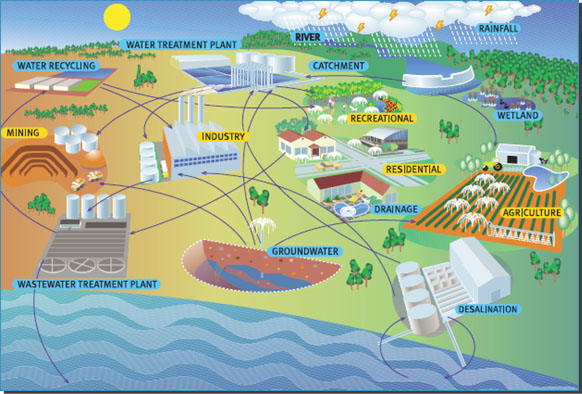Benefits of stormwater reuse project
This project aimed to improve the capture, storage and distribution of stormwater runoff in selected wheatbelt towns by implementing well-conceived and well-designed runoff harvesting systems.
Stormwater reuse is one way to assist local governments to meet conflicting pressures from rate-payers to reduce budget excesses and also keep the town’s sports grounds and parks green. A 'fit for purpose' approach can be adopted, using good quality but not drinking-quality water to meet the town's irrigation needs.
Economic benefits include:
- reduced scheme water costs
- community use of amenities requiring irrigation.
Based on 2013 charges of $1.85 per kilolitre for scheme water, Wagin Shire estimated their stormwater reuse system would save them an average $129 000 per year in Water Corporation charges (Source: Allen Hicks, Shire works manager, pers com. 2013).
Outcomes of stormwater project
The expected benefits are:
- reduced demand on drinking-quality town water supplies.
- increased community amenity using fit-for-purpose water supplies for community benefit, for example sports grounds, parks, public gardens and street-scaping
- reduced financial cost of scheme water supplies.
Some principles
Whether large or small, the ideal townsite water management plan can be achieved by applying some water sensitive urban design principles:
- Maximise water use efficiency, reduce potable water demand, and maximise the use of wastewater and harvested water including stormwater.
- Provide 'fit-for-purpose' water for specific uses. Provision of potable quality water for human use under these schemes is not recommended by DAFWA.
- Manage runoff in the catchment above the townsite. Use runoff control measures to reduce runoff volumes and peak flows.
- Retain, restore and enhance existing elements of the natural drainage system, including waterways, wetlands and groundwater features, regimes and processes, and integrate these elements in the town and surrounding rural landscape.
- Minimise pollutant inputs to surface water and groundwater systems.
- Provide protection from flooding that could occur during major runoff.
- Enhance social amenity through multiple use corridors, lot landscaping and integrating water management measures in the landscape to improve visual, recreational, cultural and ecological values.
- Design water-sensitive systems and landscapes which are more resilient to climate change (Source: modified from Department of Water’s Stormwater Management Manual for Western Australia, 2004–07).
DAFWA recommends stormwater reuse schemes be part of a whole townsite water management plan. The illustration below shows the linkages between water uses, such as community, industry and agriculture, and available water sources, such as groundwater, recycling and catchment.
A management plan recognises that water demands, stormwater sources, groundwater reserves, and wastewater contributions are interrelated components of a town water management system. These components could be many and varied, or they may be less complex than those depicted below in the stylised urban illustration from the State Water Plan (Government of Western Australia 2007).

Royalties for Regions support and partnerships
This project has received strong support from the State Government’s Royalties for Regions program.
Funding was allocated from the Royalties for Regions $78.2 million Regional Development — Water and Natural Resource Management initiative, which aims to capitalise on water availability opportunities and support regional development in WA. DAFWA is working as the lead agency with the Department of Regional Development and Department of Water to deliver this initiative.
Through Royalties for Regions, the equivalent of 25% of the state's mining and onshore petroleum royalties is being returned to regional areas each year as an additional investment in projects, infrastructure and community services.
The project builds on previous work led by the Department of Agriculture and Food, Western Australia under the Rural Towns — Liquid Assets Project.
